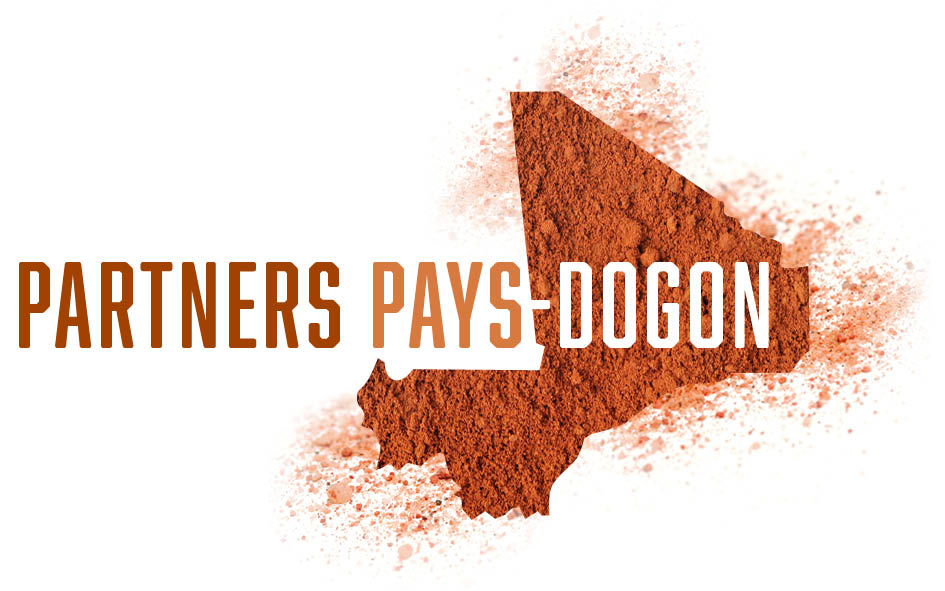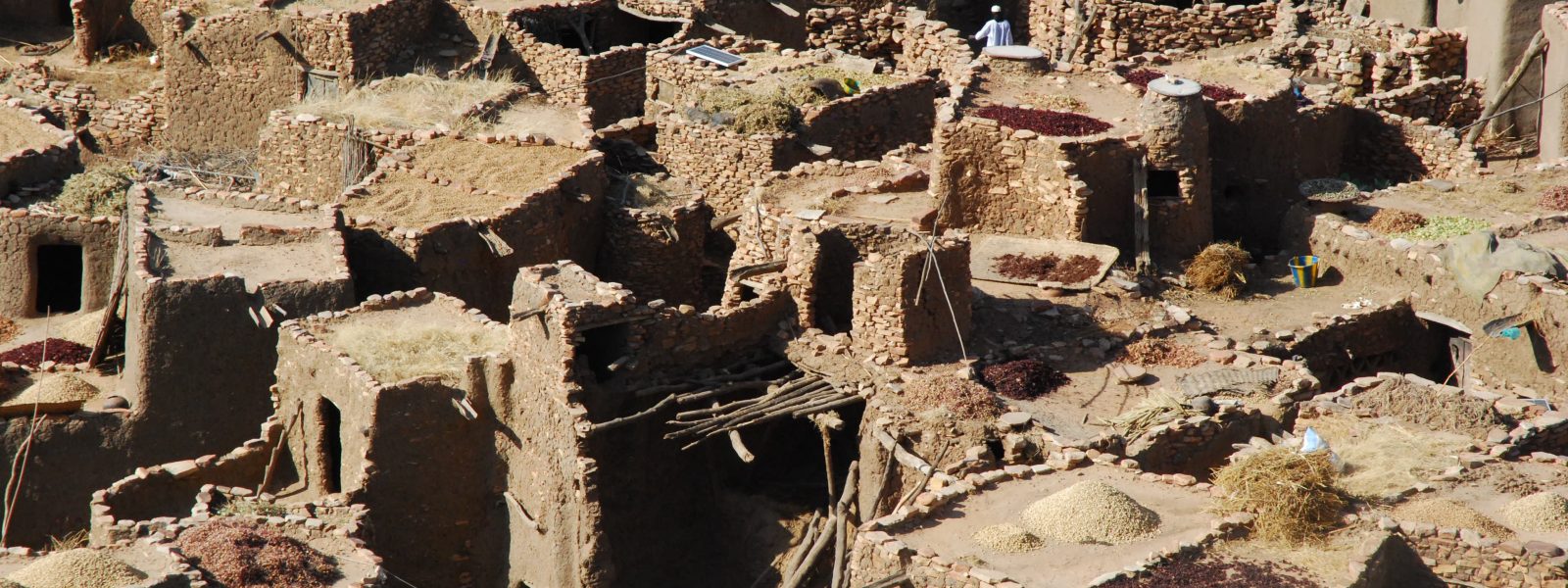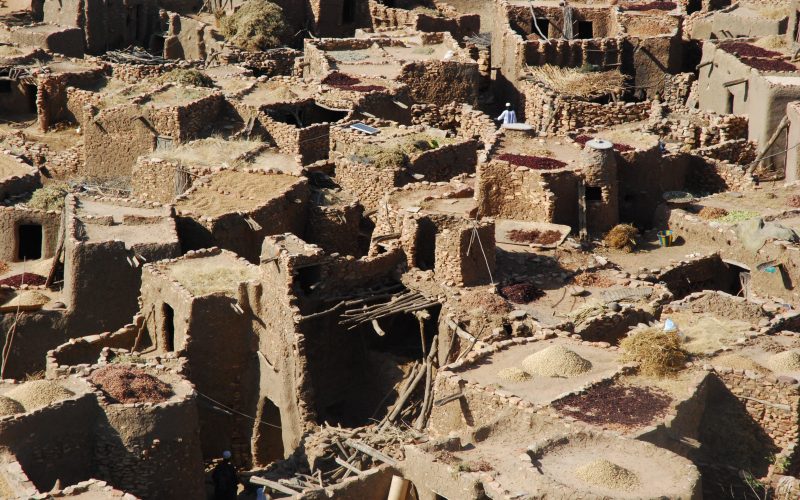The restoration and preservation of cultural heritage is one of the key activities of the Initiative Dogon Culture program (IDC).
The village of Nando lies nestled in a small valley. Hidden in the Pinari plateau, it is surrounded by a natural stone wall accessible from three gates giving access to the three neighborhoods that constitute the village. The name Nando means ‘house with floors’, which characterized the architecture of the village.

In Nando, the houses are built with natural stone walls and wooden roofs plastered with mud. The mud is necessary for the total strength of the construction and to keep it stable and protected. The roof is supported by wooden pillars on which are laying the crossbeams that carry the wooden sticks, and then it is covered with mud. The rainwater is drained and discharged through the wooden gutters on the roofs of the houses. All interior and exterior walls are coated with a first layer of banco called «froicais» which is mixed with millet or dung of donkeys in order to avoid cracks. The exterior plastering requires a particular preparation to be water resistance.

On most of the houses the mud plastering is dissipated due to the rain and the lack of maintenance, caused by the lack of water for repairing the houses during the harvest period. Every year the local population chooses the houses to be restored. In 2016 an house in each neighborhood was chosen for the renovation and the experience gained in the restoration of the mosque will improve the quality of the restoration of the houses.



